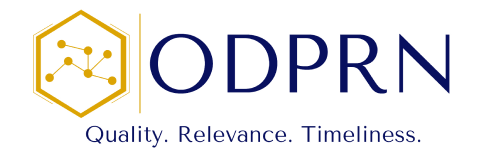The ODPRN has completed a drug class review on testosterone replacement therapy. The final reports and a summary of the research findings and reimbursement options are available below.
Final Reports and Reimbursement Options
- Consolidated Final Report and Reimbursement Option Recommendations
- TRT Qualitative Report
- TRT Environmental Scan Report
- TRT Pharmacoepidemiology Report
- TRT Systematic Review Report
- TRT Pharmacoeconomics Report
- TRT Citizen’s Panel Report
Click to view the complete infographic for clinicians and patients
Final Publications
- Factors that may be influencing the rise in prescription testosterone replacement therapy in adult men: a qualitative study
- Variations in costs and use of provincially-funded testosterone replacement therapy across Canada: a population-based study
Summary of Drug Class Review Findings: Testosterone Replacement Therapy (TRT)
Download a PDF of this Research Summary
TRT is an approved treatment for conditions that cause a decrease in testosterone production (primary or secondary hypogonadism), and is currently under a Limited Use (LU) listing in the Ontario Public Drug Program (OPDP). The Ontario Drug Policy Research Network (ODPRN) assessed the efficacy safety, accessibility, utilization and cost of testosterone replacement therapy (TRT) as part of a drug class review to provide policy-makers with recommendations for potential public drug funding changes.
What did we find?
Efficacy and Safety
TRT products were shown to increase serum testosterone, but were not found to improve the symptoms associated with low testosterone: quality of life, libido, depression, or erectile dysfunction. A review of studies was completed to determine possible associations between TRT and the following adverse side effects: cardiovascular death, myocardial infarction, stroke and prostate cancer. No statistically significant findings were observed in these safety outcomes, with the exception of cardiovascular death, although the number of events was extremely small and these findings should be interpreted with caution. Other reviews of studies have shown conflicting results regarding an association between TRT and cardiovascular adverse events; however, due to the potential for serious and possibly life-threatening cardiovascular problems, Health Canada has issued a warning about TRT use.
Accessibility
According to LU criteria, laboratory tests are required before TRT prescription to ensure patients have low testosterone levels. This review determined that patients did not have any problems accessing TRT when needed, regardless of whether or not they met LU criteria. Currently, in Ontario, 40-80% of patients receiving TRT may not meet the minimum LU criteria and a portion of these patients were not tested for low testosterone before receiving treatment. There is a growing concern around the rapid increase in TRT use, although there has been no increase in the prevalence of classic hypogonadal conditions.
Cost
Ontario has the fourth highest rate of TRT use in Canada and at the beginning of 2014, approximately 35% of TRT prescriptions were paid for through the OPDP. In 2013, OPDP expenditure on TRT was $8.3 million and is expected to surpass $12 million per year by 2016. Moving products to an EAP listing would save the province between $2.4 million to $5.2 million per year.
What do we recommend?
Exceptional Access Program for all TRT: All products would be moved from a Limited Use listing to the EAP, in order to increase adherence to prescribing criteria.
OR
Exceptional Access Program for topical and oral TRT products, Limited Use listing for injectable TRT products: Only topical and oral formulations would move to EAP to restrict misuse and costs. The listing for injectable formulations would remain as Limited Use to facilitate access.
OR
Exceptional Access Program for topical TRT products, Limited Use listing for injectable and oral TRT products: Only topical formulations would move to EAP to restrict misuse and costs. The listing for injectable and oral formulations would remain as Limited Use to facilitate access.
How did we conduct our studies?
The ODPRN conducted a drug class review consisting of multiple studies: a qualitative study to determine the experiences of using and prescribing TRT; a systematic review to assess efficacy and safety; a pharmacoepidemiological study to analyze patterns of use in Ontario and across Canada; an environmental scan to determine national and international guidelines and public drug coverage models for TRT; and pharmacoeconomic analyses to assess the cost of public drug funding for TRT’s under different coverage policies
Final Comprehensive Research Plans
- Comprehensive Research Plan (CRP) Overview
- TRT Qualitative CRP
- TRT Environmental Scan CRP
- TRT Pharmacoepidemiology CRP
- TRT Systematic Review CRP
- TRT Pharmacoeconomics CRP
Stakeholder Feedback
- Comments from stakeholders on the draft Comprehensive Research Plans
- Comments from stakeholders on the draft Reimbursement Option Recommendations
Any questions? Contact us at info@odprn.ca.
